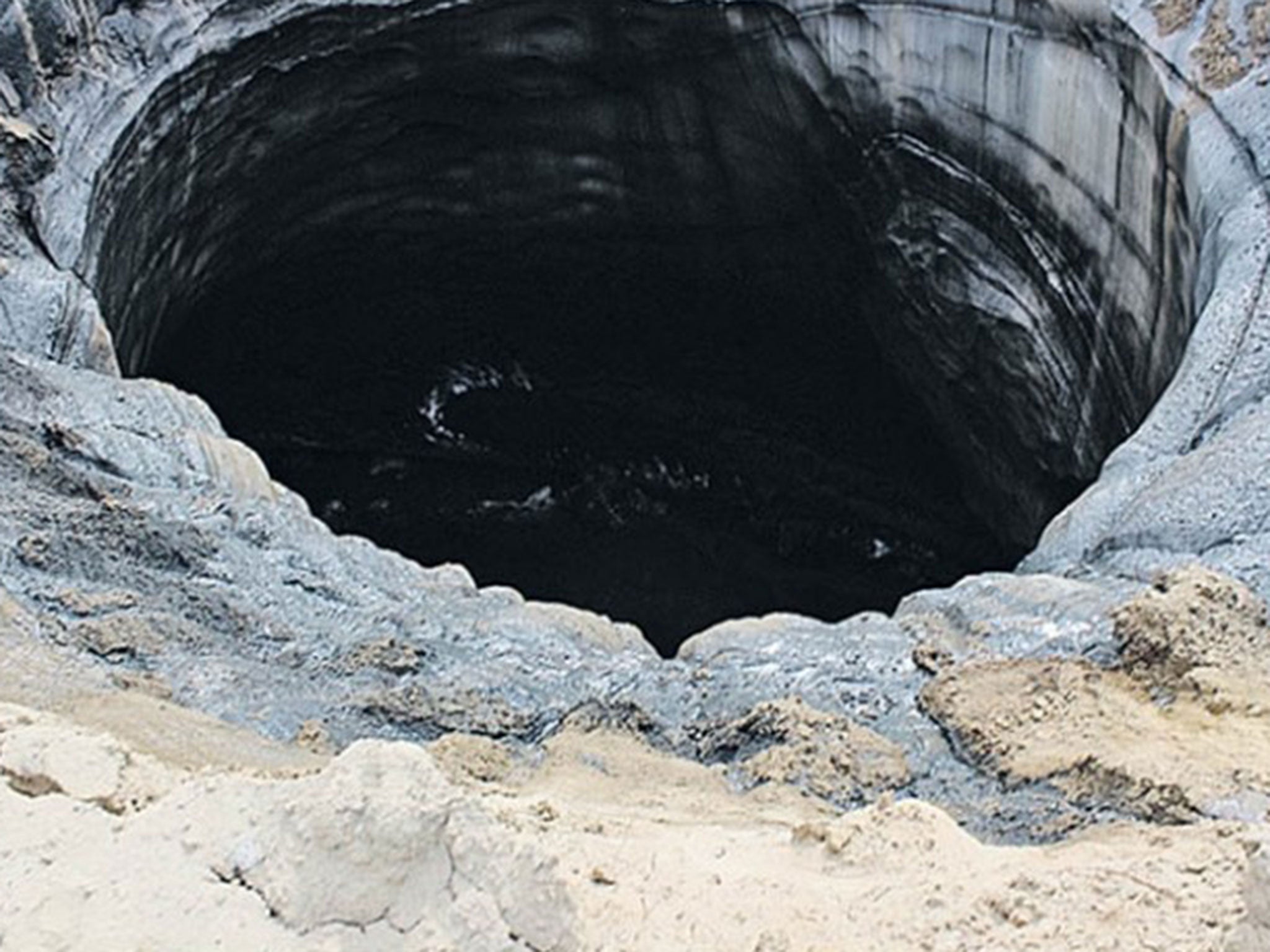Mystery of the Siberian holes at the end of the world 'solved': Scientists offer explanation
Explanations for the three enormous cavities have included everything from meteorites to aliens

Three mysterious giant craters that appeared suddenly in northern Siberia could actually be a previously unseen type of sinkhole, experts have said.
Explanations for the three enormous cavities, one of which was up to 300ft (70 metres) deep, have included everything from meteorites to aliens with some conspiracy theorists suggesting they could be connected to fracking.
A more plausible explanation for their existence has now begun to emerge. According to the website LiveScience, some experts now believe the strange cavities may be a type of permafrost sinkhole.
A sinkhole is a depression or hole in the ground caused by some form of collapse of the surface layer. A number of enormous sinkholes opening up in residential neighbourhoods in the US have recently been in the headlines.
Speaking to LiveScience, Vladimir Romanovsky, a geophysicist at the University of Alaska Fairbanks, said in his view the sinkholes in Siberia were caused by water from melting permafrost or ice.
Romanovsky told LiveScience that somehow, rather than sucking collapsed material inside of them, these holes appear to have pushed material out. Images of the holes show loose dirt surrounding them almost as though an explosion had taken place.
"One actually erupted outside," he told LiveScience. "It's not even in the [scientific] literature. It's pretty new what we're dealing with," he added.
The first massive crater was discovered in northern Siberia in the middle of last month. The hole, which was found by reindeer herders, was approximately 260 feet (80 meters) wide.
It drew world-wide press attention, not least because it was discovered in the Yamal Peninsula, otherwise known as 'The End of the World'.
Since the discovery of the first chasm, two further holes have been found. One in the Taz district was reportedly around 50ft. Another in the Taymyr Peninsula was between 200 and 330-feet.
Another scientist, Chris Fogwill of the University of New South Wales, in Australia, has suggested the first hole was created when a pingo - an earth-covered mound that forms in Arctic and subarctic regions - collapsed. A number of other scientists have supported this position.
Researchers dispatched to investigate the first formation have taken soil and water samples to determine when the hole was formed.
Yamal holds some of Russia’s largest gas reserves and the crater appeared less than 20 miles from the biggest gas field, Bovanenkovo.
Mikhail Lapsui, a deputy of the regional parliament, said local residents in the area first became aware of the new opening in September 2013.
He told the newspaper: “I flew by helicopter to inspect this funnel on Saturday 19 July. Its diameter is about 15 metres. There is also ground outside, as if it was thrown as a result of an underground explosion.”
Vladimir Romanovsky, meanwhile, told LiveScience that the development of permafrost sinkholes could be related to global warming.
Subscribe to Independent Premium to bookmark this article
Want to bookmark your favourite articles and stories to read or reference later? Start your Independent Premium subscription today.

Join our commenting forum
Join thought-provoking conversations, follow other Independent readers and see their replies